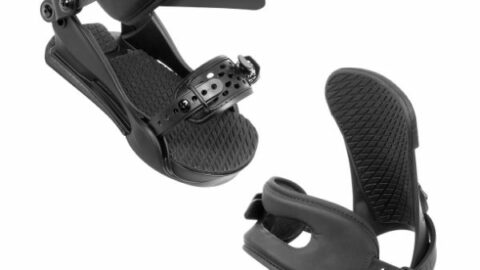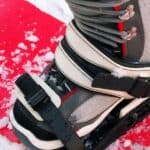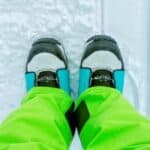When choosing snowboard bindings, it is essential to factor in your riding style, so that you can maximize your experience.
Snowboard bindings provide a connection between yourself and your snowboard and directly transfer your movements to your board.
So, it goes without saying that you need to select bindings that are the best match for your snowboard and your unique style of riding.
There are three types of snowboard bindings that fit into the main riding style categories, but you will also need to consider flex ratings and compatibility.
While this may sound complicated, choosing the correct bindings will enhance your snowboarding experience.
How to Choose Snowboard Bindings
First, determine your riding style: freestyle, all-mountain, or freeride. Then, take a look at the flex rating of the bindings. Choose between strap-in, rear-entry bindings, or burton step-on bindings. Finally, you will need to make sure that the bindings are compatible with your snowboard boots.
Determining Your Riding Style
Although it may seem like your riding style has nothing to do with snowboard bindings, this couldn’t be further from the truth.
Actually, your style of snowboarding directly influences your choice of bindings, as certain types of bindings work best when paired with a particular style of riding.
If you are a freestyle rider, you probably spend most of your spare time out in the terrain performing trick moves on your board.
Freestyle snowboard bindings will provide you with a smoother flex rating, which will help you land easily, and allow more room for trial and error.
All-mountain riders are very versatile on the snowboard and tend to try out every move from park to run, which means that all-purpose bindings with a medium-level flex rating are ideal.
Now, for riders who are always up for a challenge, freeride bindings have the stiffest flex rating to provide more security for those who enjoy speeding down steep slopes.
Flex Ratings
So, with all this talk about flex ratings, you may be wondering what a flex rating is.
Well, most snowboard binding manufacturers classify their bindings by using a flex rating that ranges between one and ten.
Bindings with a lower flex rating are softer, but as the numbers increase, the flex will become stiffer.
While your choice of a flex rating may very well depend largely upon your personal preferences and the overall feel of the bindings, you shouldn’t base your decision on comfort alone.
As stated before, choosing between soft, medium, and stiff bindings will greatly influence your riding style and your overall experience on the snowboard.
Types of Snowboard Bindings
Once you determine your riding style and decide on the appropriate flex rating, the next step is to shop for snowboard bindings.
There are three main types of snowboard bindings that you’ll need to choose from.
Strap-in bindings are by far the most popular and common binding type. They have been the standard choice for years because of the security and ease of usage they provide.
After simply slipping your feet into the bindings and securing the straps, you’ll be set to head out and hit the slopes!
Alternatively, you can choose rear-entry bindings or burton step-on bindings. Rear-entry bindings have a high-back, which pops open, and one strap near the toe area.
After the high-back opens, you’ll need to slip your boot into the strap before closing the high-back.
If this sounds a little tricky for your taste, you may want to consider burton step-on bindings instead.
When paired with the burton step-on boots, these bindings will get you on the slope the quickest. Simply slide your boots into the bindings and click yourself in place.
Compatibility Between Bindings and Snowboard Boots
Aside from burton bindings naturally being compatible with burton boots, you will still need to make sure your binding size is compatible with your boot size, regardless of your choice of bindings.
This can be accomplished by taking a peek at the sizing chart of the manufacturer.
After consulting the sizing chart, you can double-check that your boot size matches the binding by placing your boot in the binding as though you were about to strap in and go snowboarding.
As long as your boots feel comfortable and the bindings provide a good grip on your boots, you should be all set.
Frequently Asked Questions about How to Choose Snowboard Bindings
What should I look for in a snowboard binding?
The best bindings will offer enough room for your boots to be able to flex a little without feeling too loose or wobbly. You will also need to pay attention to the length of the straps, as straps that are too long, even after the binding is secured, may cause you to trip and fall.
Do bindings matter on a snowboard?
Bindings are what connect you to the snowboard and they can help you properly maneuver and maintain control of the board. Snowboard bindings can either make or break your snowboarding experience.
How long do snowboard bindings last? And how soon should I replace them?
Snowboard bindings usually last for between fifty to one hundred days, depending on the type of binding and how often you go snowboarding. Boots are actually the most important piece of snowboarding gear as well as the piece that needs to be replaced frequently.
Conclusion
Snowboard bindings are essential gear that enhances your snowboarding experience while providing a source of security and connection to your board.
When choosing your bindings, you will need to consider your riding style, the flex rating, the binding style, and the compatibility with your boot size.
Once you have selected the right type of binding for your unique snowboarding style, you will be all set and ready to hit the slopes!




